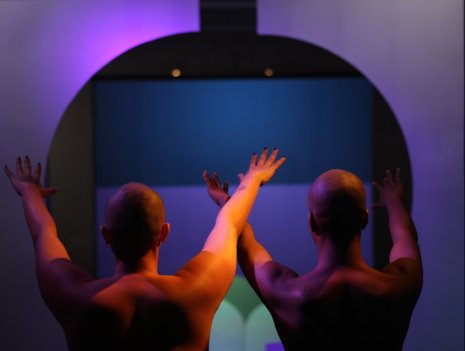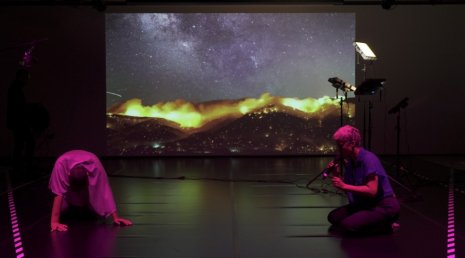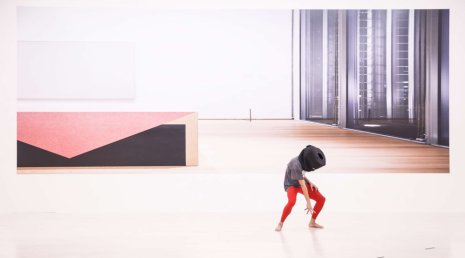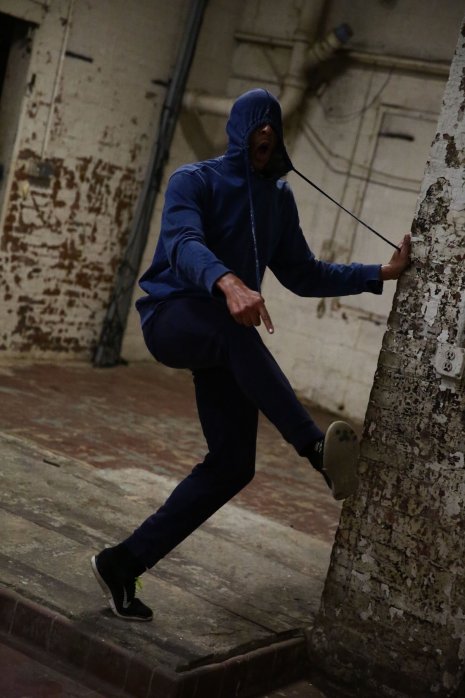In Will's Words...
Dance and choreography have been, for me, a tireless pursuit and reappraisal of the question what does a body mean? what does my body mean? I experiment and research at the overlap of black performance, choreography and literature, and in this work my body remains an open question. Whatever I make, whatever media I use, it is about bringing ideas, materials and concepts into contact with bodies to excavate my doubts and to encourage a sense of possibility. Dance is so much about mortality, about the limits of my and others’ bodies, but dance is also about a kind of mystical and spiritual beyond,” so choreography helps me cultivate a belief in the capacity to imagine a future tense and cultivate and construct new experiences.
I explore these ideas at the transitions between language, dance and other media—where one form of communication becomes another, and where assumed form becomes unstable. I am devoted to raising questions about bodies rather than apprehending them with certainty. So, I make performances that offer extended states of attention and ambiguity to the audience. I want the public to have a visual, cognitive, emotional experience that allows performers to play at the edges of human expression. These zones of flux and becoming are where I feel most alive and hungry as an artist and performer. I believe multi-sensory communication can establish committed, durational and complex attention, entangling the performers and the public in states of wonder, absurdity and doubt.
I’ve spent a long hours obsessing over abstraction in dance and where it does and doesn’t overlap with abstraction in sound or visual art. I love what abstraction allows in terms of freedom of expression and worry about what it fails to account for in history. Abstraction is often taken for granted; it applies to physical shapes and non-narrative performance, while ignoring the historic disorientation of walking on stage as a racially marked, hence, abstracted body. So I’ve spent time cultivating dance and choreography as dynamic, fleshy, elusive methods for continual re-orientation around these questions of abstraction, blackness and time. Choreography is a question of putting matter in motion and guiding it through various disguises of the human.
In my early training and professional dancing, I worked across many genres and styles—Afro-fusion, postmodern and house dance as well as Chinese Opera dance and durational performance art. I was raised on this breakdown of hierarchy between techniques. Now, technique is whatever tools I need to build to manifest my ideas across disciplines, with the body always at the core. So, In other words, technique is never a search for perfect form or a stylistic pedigree—bodies are complex, embodied genealogies that can and should be presented as such. I use choreography to expose, camouflage, organize and disrupt the idea of a singular, fixed self—as well as a fixed idea of discipline. I think of my work as non-disciplinary. My work encompasses objects, speech, sound, video, and installation alongside the dancing body.
The human voice has been a tool for me to sing, shout and mumble, to scour the edges of sense and intelligibility, where syllables and gestures ricochet against each other. I love the humor that arises out of these activities—where, if you spend enough time immersed in a particular world or manner of doing things, the unfamiliar becomes deeply funny or poignant or articulate. People, including myself, want to solve mysteries, or at least try, so in honoring this desire, I make work that is susceptible to its own desire for a certain privacy, even in public, a kind of interior life. I make choreography that is effortful, durational, and also vulnerable in its execution, some call it evasive. There is always some system at work, or some system in decay in both my performances and installation. My work is a place where I can insist on the absurd to the point where things might fall apart. I like making art for its potential to experience many breaking points at once.
At some point, I realized that the ever-disappearing nature of dance could be a principle for composition. Instead of building up monumental figures or truths for public consumption, I’ve pushed decomposition as a form of radical performance presence, or, decomposition as a personal vernacular, or even a craft. In my work, bodies engage multiple, often diffractive strategies to insist on “being here,” like speaking while dancing, facing away from the public while shouting, manipulating objects while gesturing, working with vocal sound as a bodily presence, wearing costumes that transform the figure in the non-human—all have been attempts to cultivate the instability of form and the poetry of distortion.
My dances are doing their job as long as they feel vital and activated, and insist on their own right to take up space in a room, in a psyche. For cues, I look to choreographers Ralph Lemon, Jennifer Lacey, Ishmael Houston-Jones, artists Joan Jonas and Pope.L, who all contemplate being an artist as an epic work-in-process, whose multi-disciplinary practices consider history, politics, form and personal myth, and who embody great persistence and risk. I think of them all as great improvisers. I aspire to be that a great improviser in all things.
I still believe that performance can transform and enliven our social connections, even as the US democracy continually stumbles around in a darkness of its own invention. Consensus feels impossible right now, or maybe always has been in the US. Dance is about activation on some fundamental level, activation that leads to wonder or doubt or dissensus, and this feels productive; feels like life. This is also why I am interested in failure and risk in artmaking—it runs parallel to the narrative of constructing life inside of America. The performers I work with become family and the rehearsal is a space for world-building. I try to make space for us and the public to learn how performance can re-imagine who we are becoming at every moment, in relation to one another. And sometimes we fall apart in the process. This is also valuable. In this sense, my choreography is also about endurance; the endurance of a belief that takes human form—and is therefore always more powerful, surprising and frail than we ever imagine.
Here’s links to writing:
Uncle Rebus Poems (pub in Dancing While Black Journal)
Essayons (co-wrote with Thomas Lax, pub in The Brooklyn Rail, very proud of this piece)
Bittersweet Kinetic (pub for Visual AIDS)










